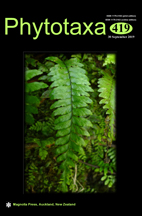Abstract
Cyanobacteria are photoautotrophic microorganisms able to colonize historic stone monuments, causing severe aesthetic, physical and chemical alterations to the substrate. In a study that aimed to fingerprint the phototrophic community of the biodeteriorated walls of the Old Cathedral of Coimbra (UNESCO World Heritage Site), an unknown Myxacorys-like cyanobacterium was isolated. In this paper, we employed a polyphasic approach based on morphological, ecological and phylogenetic analyses of the partial 16S and the whole 16S-23S ITS rRNA regions. The resulting analyses allowed us to propose the description of a new species, Myxacorys almedinensis sp. nov. within the genus Myxacorys.

